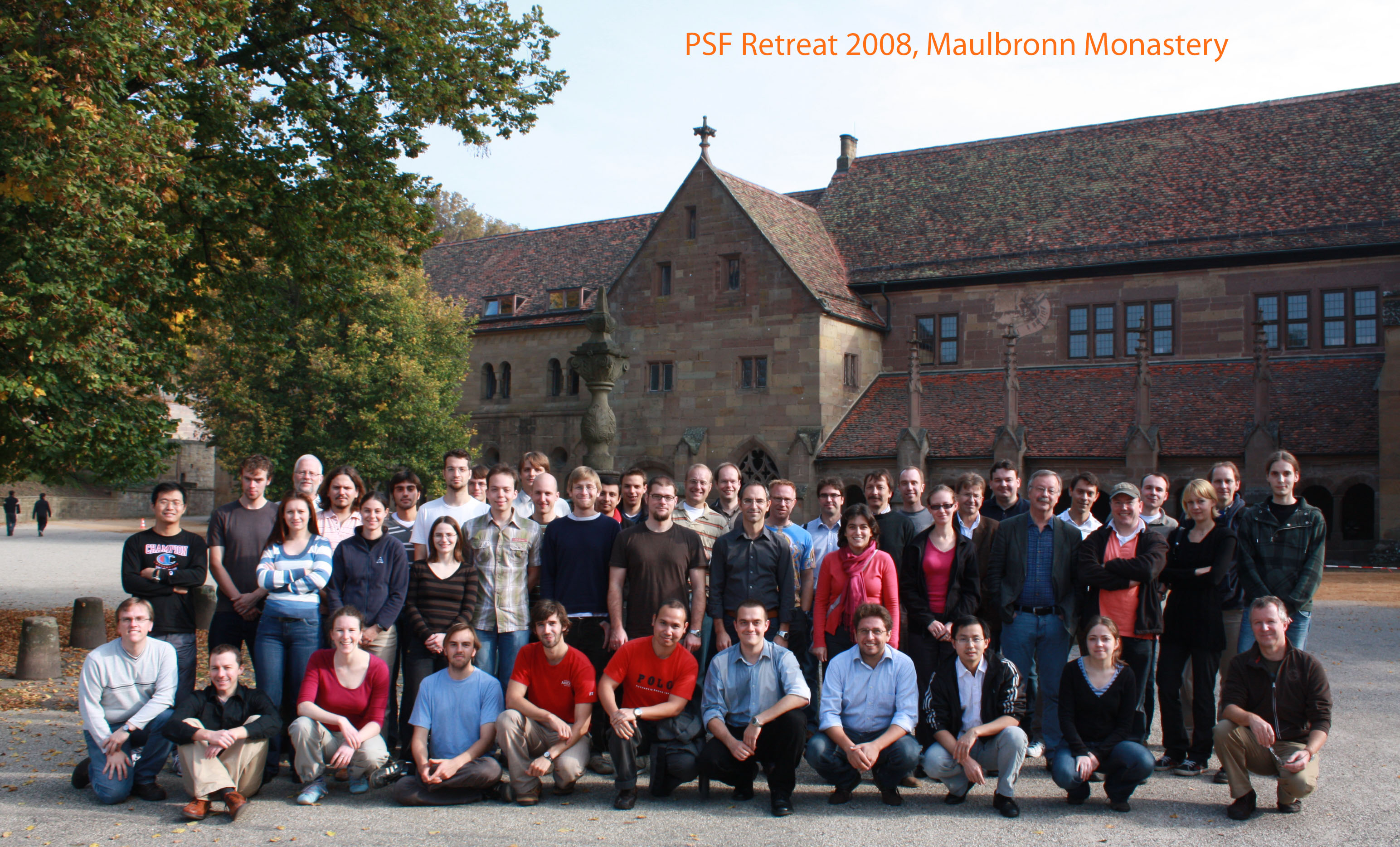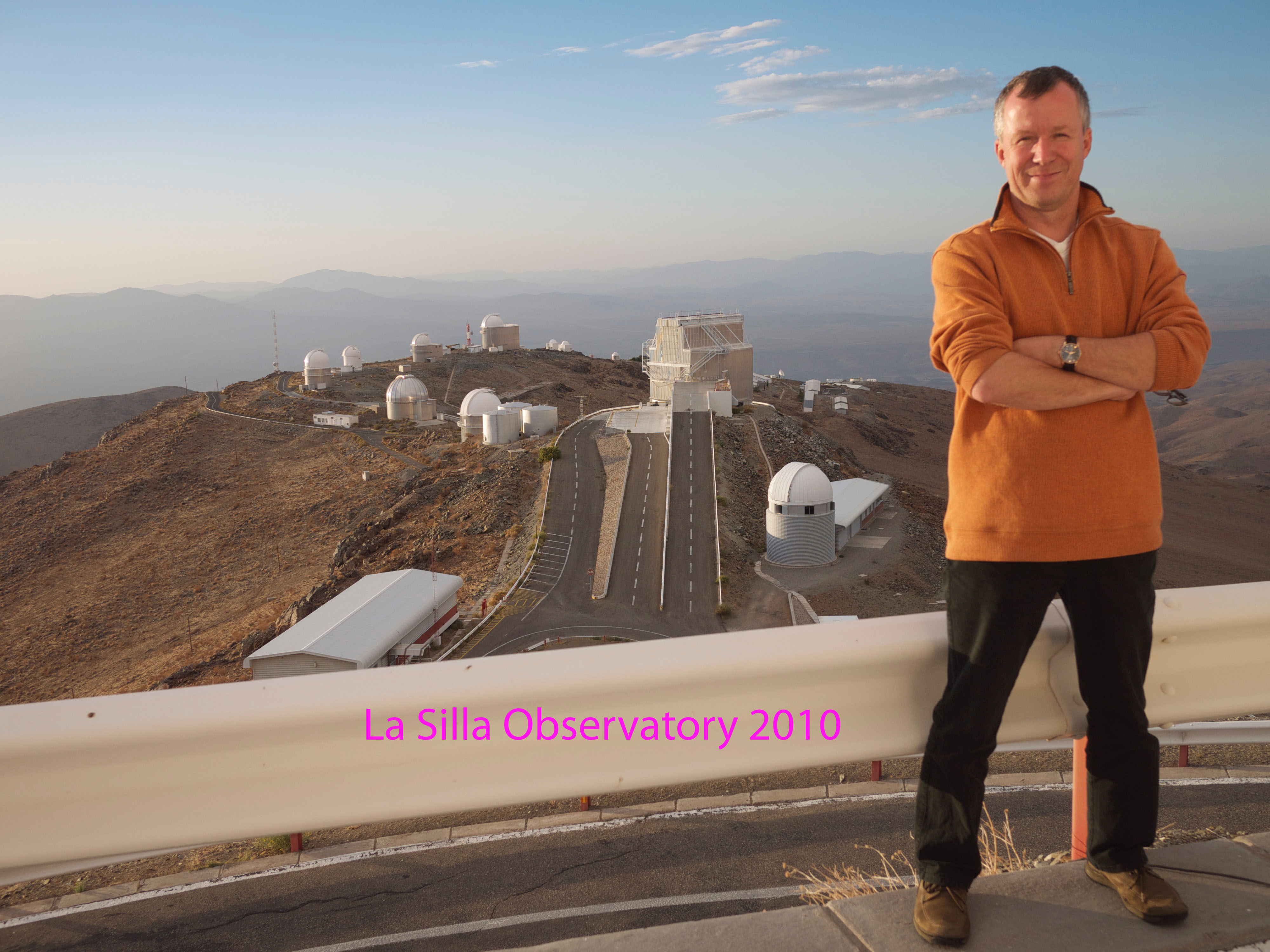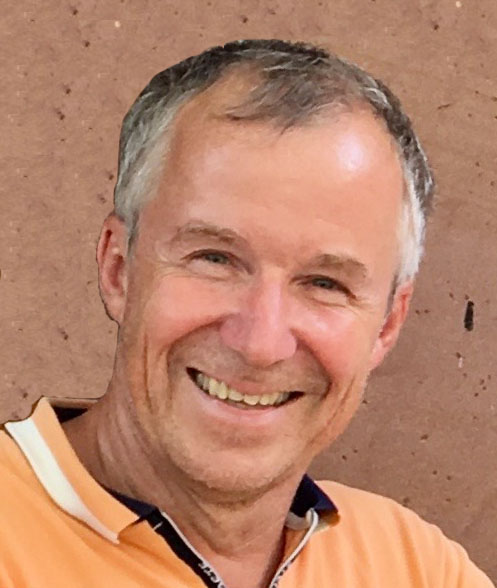Intro

Science is a real adventure.
I was fortunate and privileged to be directly involved in the
exploration
of nature and search for knowledge. An important aspect of science is to
ask the right questions, or, in other words, to first identify the
scientific problems. Once that work is done, the next step is to find
answers. In observational astronomy, the answers are found through
experiments and observations in the sky.
Work

In observational astronomical research, the scientist usually
has two possibilities to find answers to astro-physical questions. She writes observation
applications for instruments that already exist at telescopes
or she accepts the efforts and designs and builds a new observation
instrument.
The process of building new optical instruments is usually
organised in a project. The aim of the project is to derive requirements
from the scientific questions, to translate them into specific designs
and ultimately to build the optical instrument from them. Designs as well
as instrument hardware and software are mainly developed within project
phases in the fields of optics, opto-mechanics, cryo-mechanics, electronics,
detectors, control software, data acquisition and data reduction.
This was my working environment, from working on a project to managing
projects.
The scientific and technological return of my work is partially
documented through this list of
publications.
In my professional life, I supported teaching exercises of MPIA PhD
students to supervise Master students at Heidelberg University.
For this purpose, I developed an optical experiment -
task/experiment number F36 - for the Advanced Physics Lab for
physicists at Heidelberg University. The experiment is located
at MPIA and is currently supervised and further maintained
by Markus Feldt.
Together with Andrei Tokovinin, I am the author of the
online tutorial on adaptive optics (in German).
Work illustrated

For illustration and pleasure here are some
pictures from my time at MPIA.
From time to time the way
to work offers a beautiful panorama.
Cool, the earth is a rocky planet, here are my proofs:
a famous mountain
in Argentina, a mountain
"
high light" in the German Allgäu, and for some Heidelberg people obligatory: the
Heidelberg summit,
a truly beautiful ascent.
Contact and more

hippler@...
ORCID: orcid.org/0000-0002-3912-6108
SCOPUS ID: 56232969400
Google Scholar




